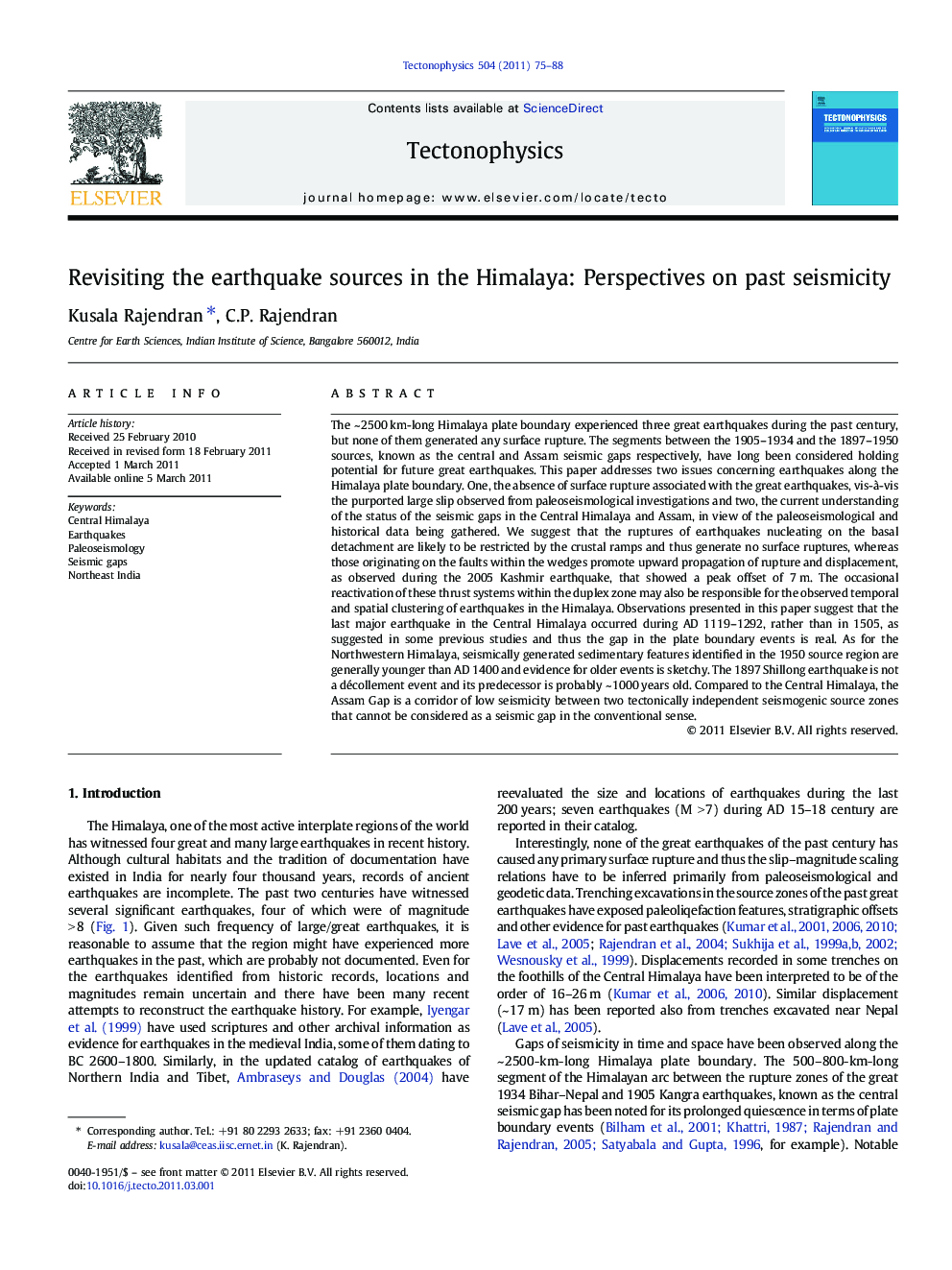| کد مقاله | کد نشریه | سال انتشار | مقاله انگلیسی | نسخه تمام متن |
|---|---|---|---|---|
| 4693179 | 1636845 | 2011 | 14 صفحه PDF | دانلود رایگان |

The ~ 2500 km-long Himalaya plate boundary experienced three great earthquakes during the past century, but none of them generated any surface rupture. The segments between the 1905–1934 and the 1897–1950 sources, known as the central and Assam seismic gaps respectively, have long been considered holding potential for future great earthquakes. This paper addresses two issues concerning earthquakes along the Himalaya plate boundary. One, the absence of surface rupture associated with the great earthquakes, vis-à-vis the purported large slip observed from paleoseismological investigations and two, the current understanding of the status of the seismic gaps in the Central Himalaya and Assam, in view of the paleoseismological and historical data being gathered. We suggest that the ruptures of earthquakes nucleating on the basal detachment are likely to be restricted by the crustal ramps and thus generate no surface ruptures, whereas those originating on the faults within the wedges promote upward propagation of rupture and displacement, as observed during the 2005 Kashmir earthquake, that showed a peak offset of 7 m. The occasional reactivation of these thrust systems within the duplex zone may also be responsible for the observed temporal and spatial clustering of earthquakes in the Himalaya. Observations presented in this paper suggest that the last major earthquake in the Central Himalaya occurred during AD 1119–1292, rather than in 1505, as suggested in some previous studies and thus the gap in the plate boundary events is real. As for the Northwestern Himalaya, seismically generated sedimentary features identified in the 1950 source region are generally younger than AD 1400 and evidence for older events is sketchy. The 1897 Shillong earthquake is not a décollement event and its predecessor is probably ~ 1000 years old. Compared to the Central Himalaya, the Assam Gap is a corridor of low seismicity between two tectonically independent seismogenic source zones that cannot be considered as a seismic gap in the conventional sense.
Journal: Tectonophysics - Volume 504, Issues 1–4, 9 May 2011, Pages 75–88